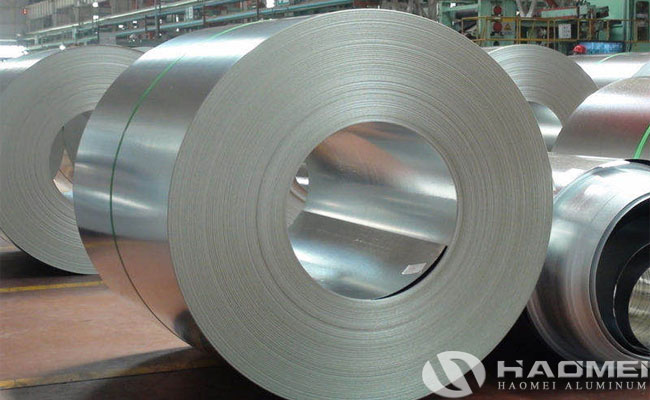Haomei are specialized in aluminum rolls sheet metal manufacturing and export for more than 20 years with advanced producing technology. The technical method of aluminum sheet roll are hot rolling and cold rolling. When it comes to aluminum sheets, the first thing we think of is the cold rolling process. The rolling process below the recrystallization temperature of metals and alloys is called cold rolling. During cold rolling, although the temperature of the rolled piece can be high due to the heat of metal deformation and frictional heat, it has a certain recovery effect, but cold rolling hardening (work hardening) plays a major role in the cold rolling process.

Compared with hot rolling, the main feature of cold rolling is that thinner aluminum sheet and strips can be obtained. Usually the thickness of hot rolled slab is 6-8mm. The minimum thickness is 2.5mm-3.0mm. Due to the large temperature drop of the rolled aluminum sheet during the hot rolling process, it is difficult for the hot rolling to continue rolling to a thinner thickness, while the cold rolling easily causes the rolled piece to continue to become thinner. Usually, cold rolling mills can roll to 0.5-4.5mm, and more advanced cold rolling mills can roll out ultra-thin or thick foils with a thickness of 0.1mm-0.2mm. Compared with hot rolling, the main characteristics of cold rolling are that cold rolling can produce products with precise dimensions, uniform thickness, good flatness and surface gloss, good product structure and high surface quality.
Because cold rolling mills have higher precision than hot rolling mills, the comprehensive automatic control level of cold rolling mills is higher. For example, more advanced cold rolling mills are equipped with automatic control devices for thickness and shape. In addition, cold rolling can roll aluminum rolls sheet metal with high surface quality by using rolls with higher finish.
Contact Us
- 1103, No.14 Waihuan Road, CBD,Zhengzhou, China
- +86-0371-65621391
- nydia@aluminumhm.com
- Contact Form

